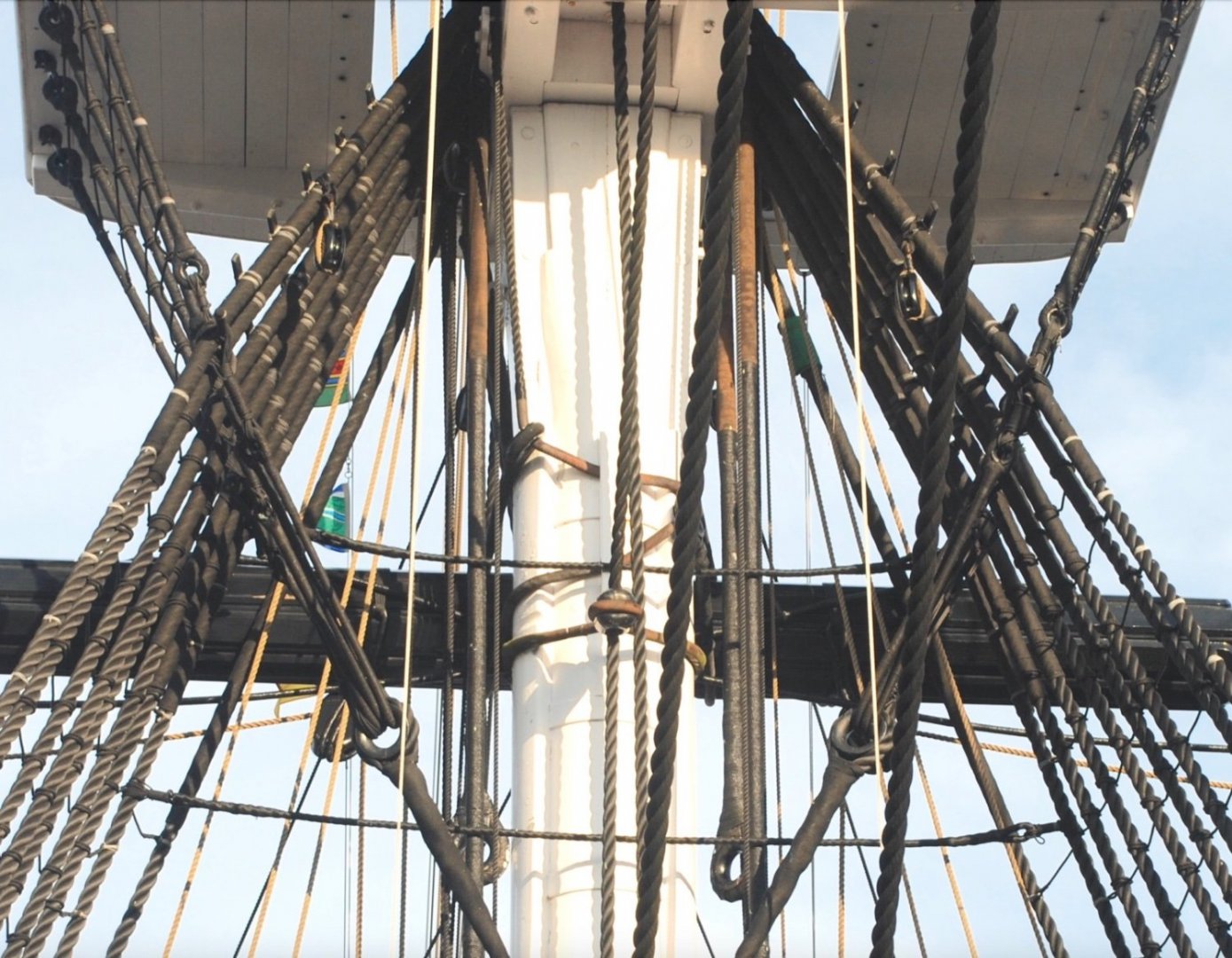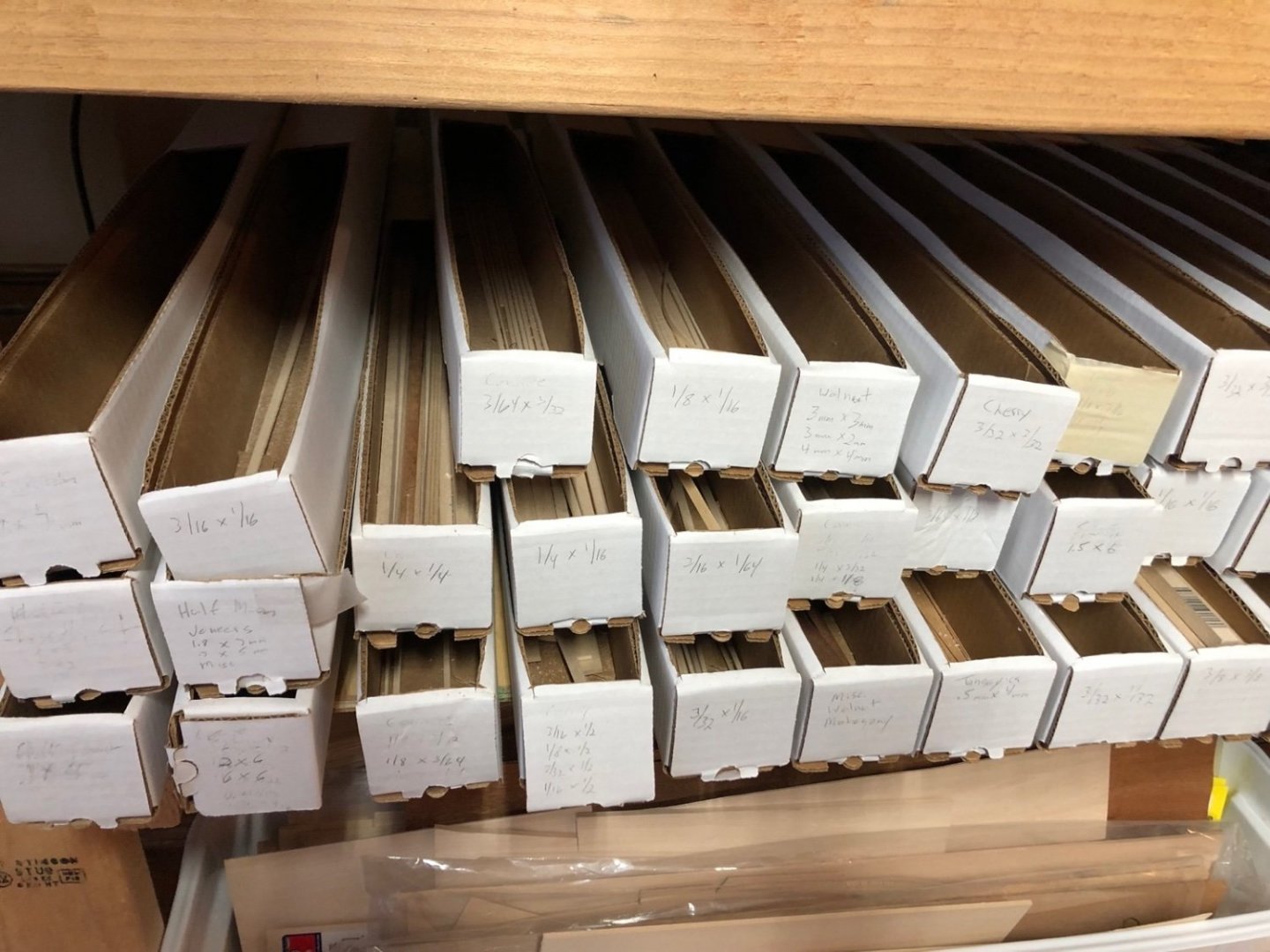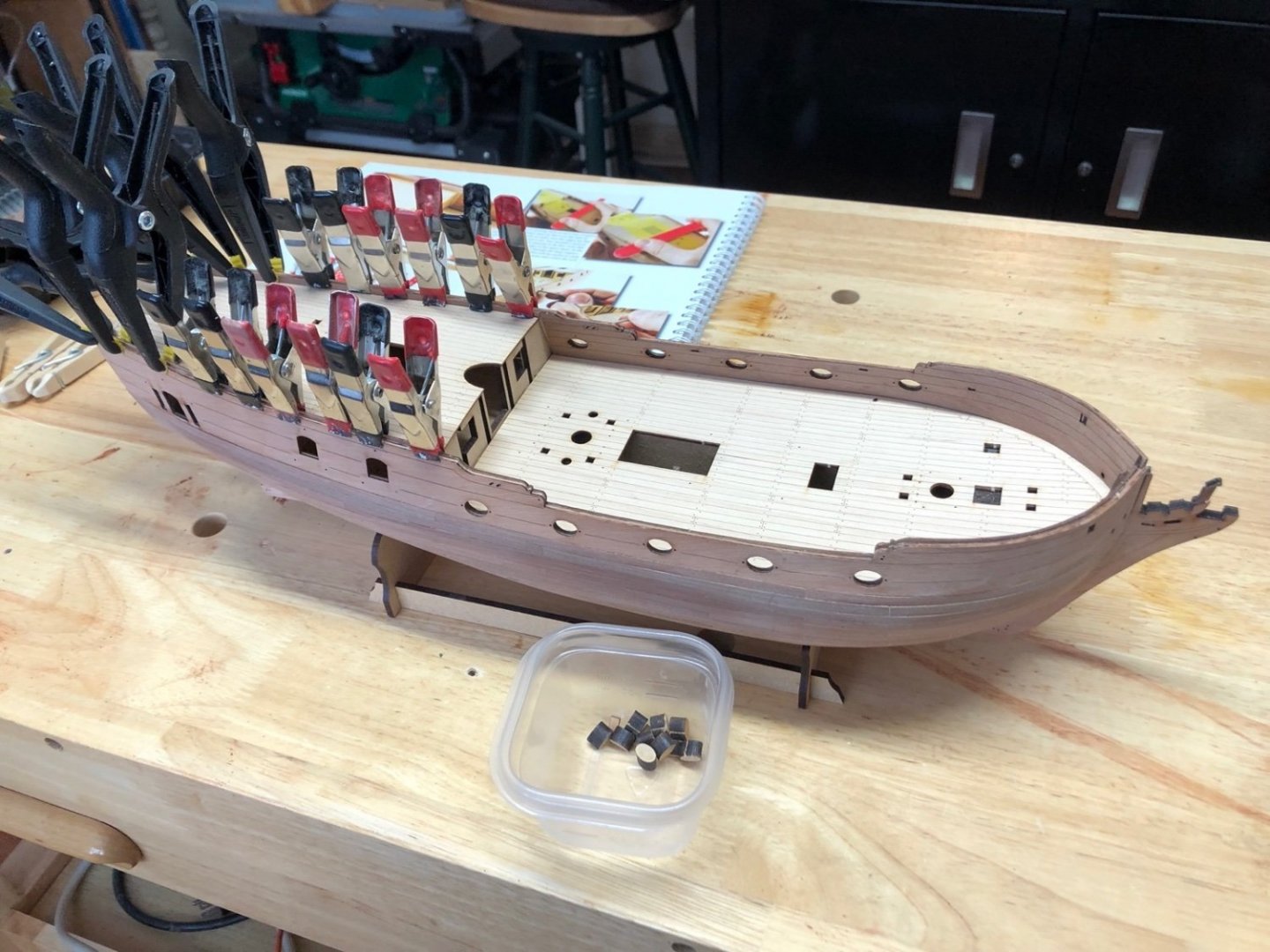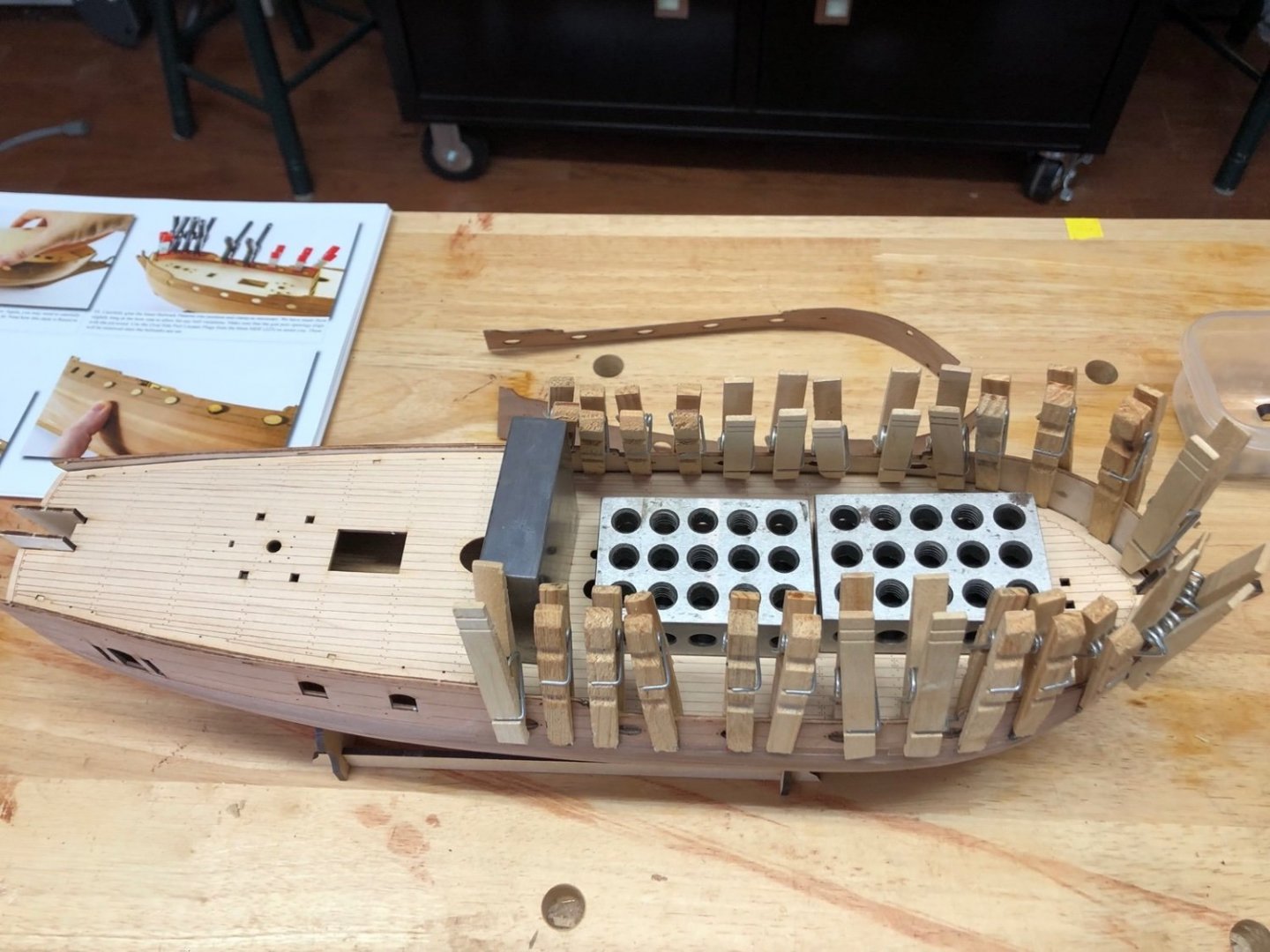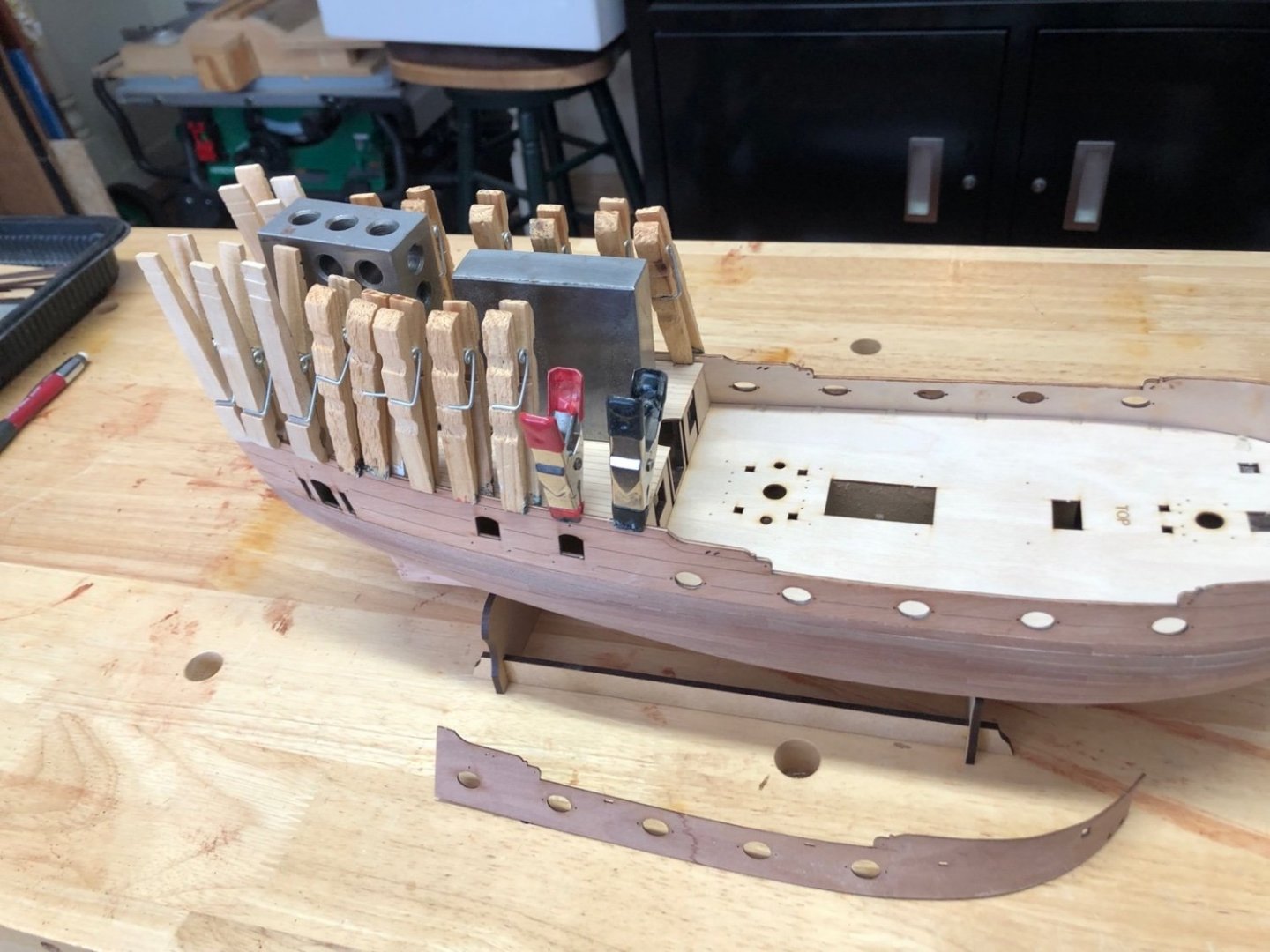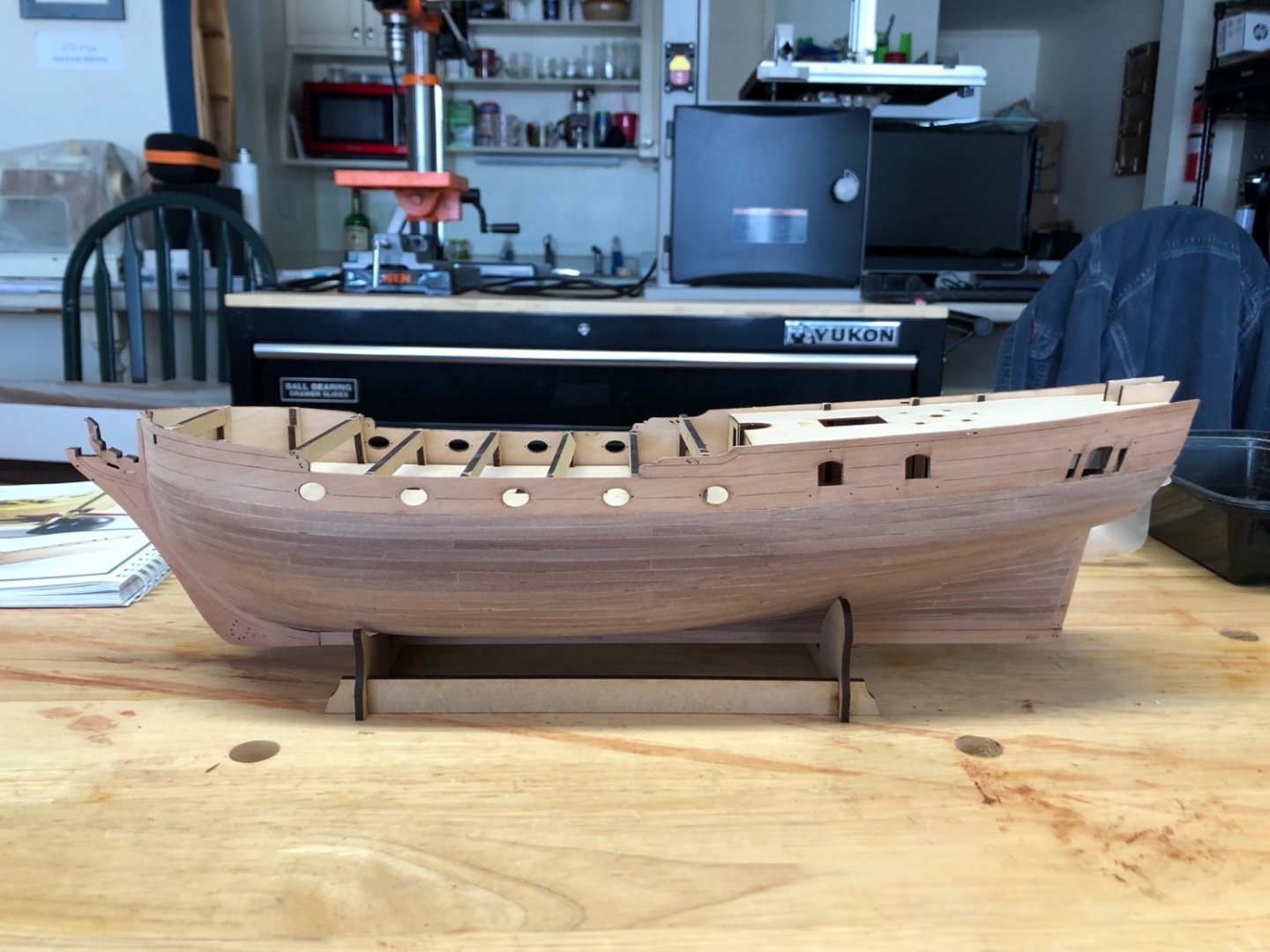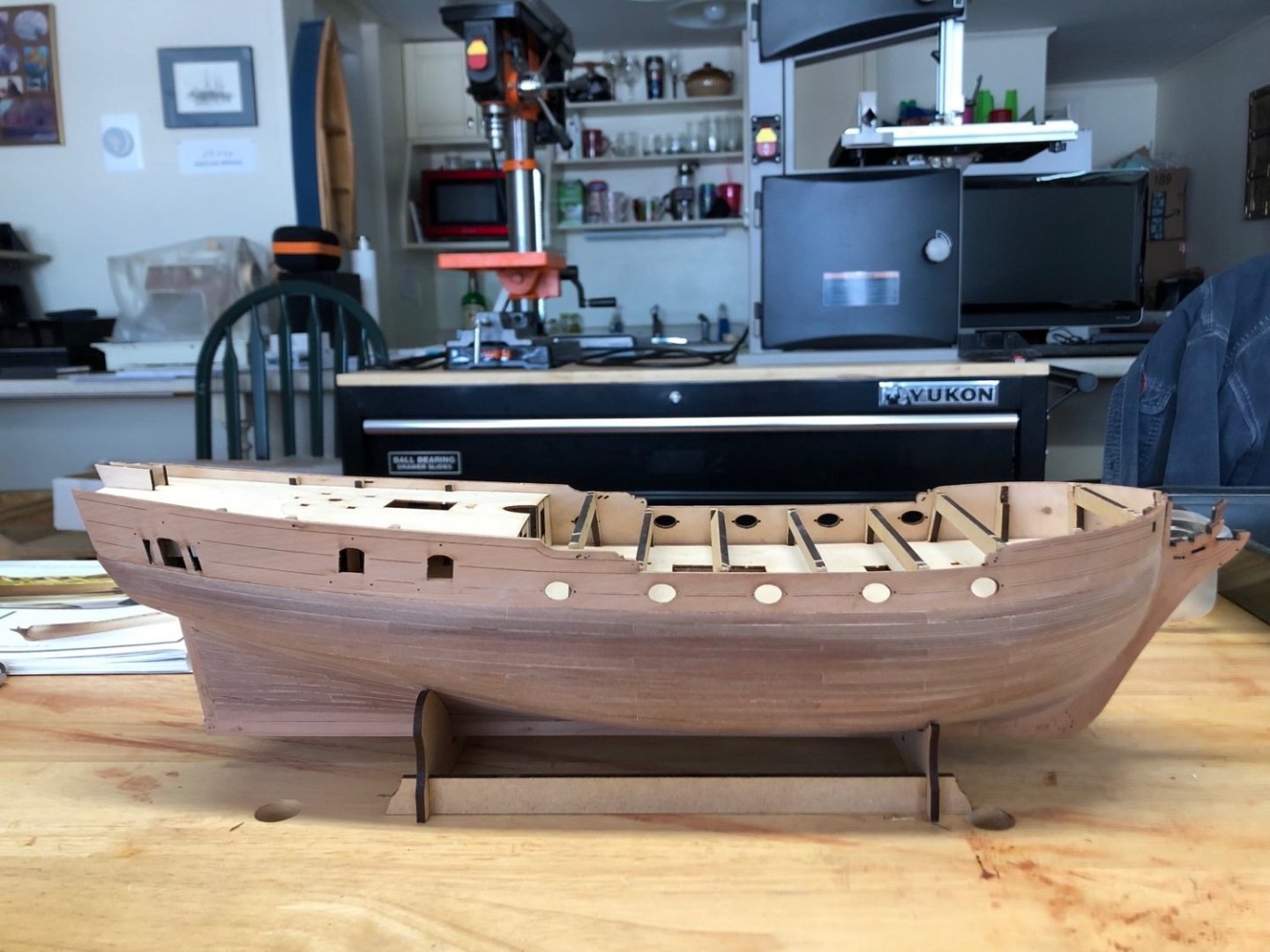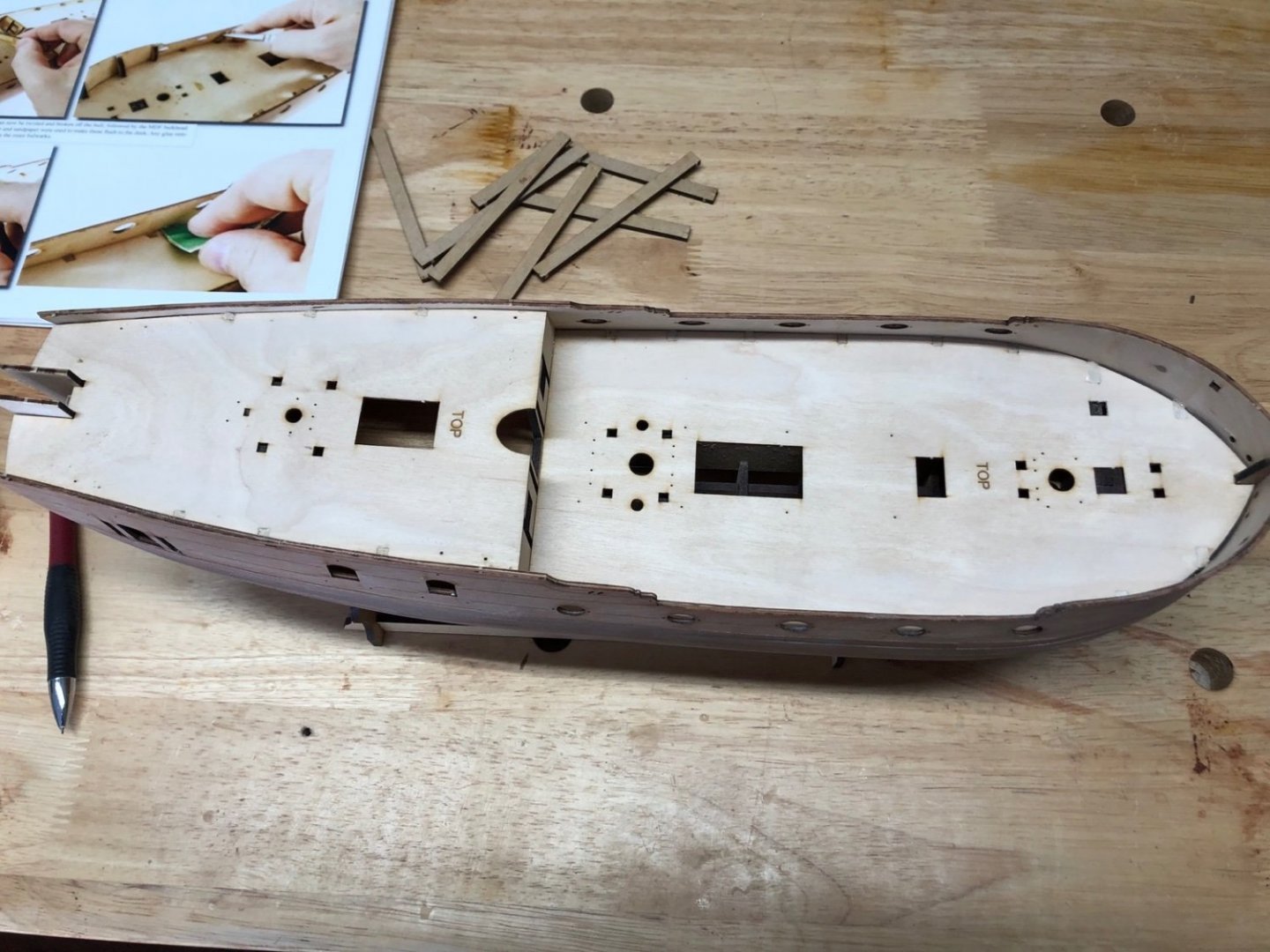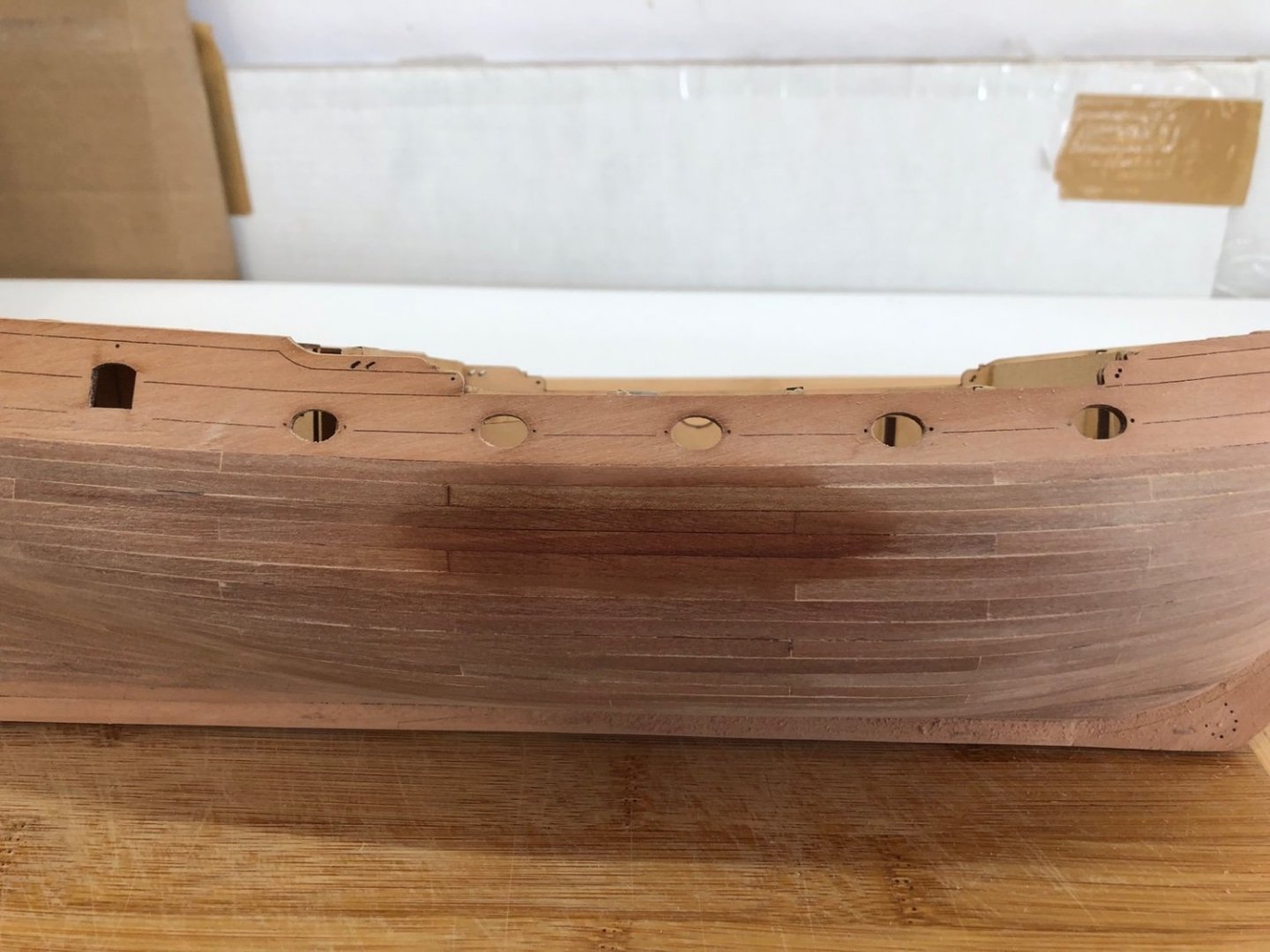-
Posts
2,407 -
Joined
-
Last visited
Content Type
Profiles
Forums
Gallery
Events
Everything posted by usedtosail
-
The stove construction has started but only the internal frame. I am using 1/4" birch plywood for the framing pieces. The frame is very similar to the Syren stove frame, just scaled up to 1:16 scale. Here are the frame pieces being glued up along with the kit frame pieces. The piece at the top is just a spacer so the sides will be parallel. I also ordered some weathering powder which I have not used before. Since I will be painting this all black I want to be able to make it look more like metal. I will use the kit to practice with the powder to see what I can do with it.
-
Nicely done on the bentinck shroud rigging so far Tom. That was a very enlightening discussion in my build log on lanyard colors for me. I always used tan line for them, now I only use dark brown, not black. I remember that drawing of the futtock and bentinck shrouds from the instructions and I was equally confused. I then found this image that I took of the area under the fighting top the last time I toured the actual ship, that actually shows the shrouds and how they are rigged. There are a number of thimbles and lanyards that are seized to the futtock staves. I don't think I recreated this exactly on my Connie but it was a reasonable facsimile at that scale. Hope this helps.
- 163 replies
-
- Model Shipways
- Constitution
-
(and 2 more)
Tagged with:
-
In continuation of the 1:16 scratch built ships components, my next project will be a ships stove display, to go along with my Capstan and Ships Wheel projects. I am using a variety of sources for this, including the 1:48 stove mini-kit from Syren, and the instructions in the TFFM and Naide frigate books. I will make the bulk of the stove from wood, with brass for some of the outer features. I am hoping to use real gears and chain for the rotisserie but we will see as we get into it. I am just starting the planning for this so it may be a while before I have something to show.
-
I fitted and glued the two forward inner bulwark pieces in place. Once I had the bow trimmed back to fit, the port side piece fit perfectly but I had to remove some material from the starboard side piece at the deck level to get the spacers to fit into the gun port openings. Even then it was a struggle to get the spacers in place after I put glue on the back of the inner piece. I need to still trim the top down a bit. Today I glued the two aft inner bulwark pieces in place. I didn't do any trimming on these as the fronts matched the forward bulwark pieces and the backs matched the aft pretty well. I did not use the spacers with these as they did not line up with the existing holes, so I do have some holes I need to fill now where the spacers would have gone. And I need to trim quite a bit off the top of the starboard side piece.
- 118 replies
-
- Duchess Of Kingston
- Finished
-
(and 1 more)
Tagged with:
-
When I removed the weights and clamps from the fore deck, most of it was glued down well but there was a slight raised area around the fore mast hole and fore hatch opening. I couldn't get wood glue into the gaps between the deck and plywood sub-deck and I didn't want to risk using thin CA to wick between them, so I tried wicking some isopropyl alcohol between them, hoping it would soften the wood glue that was already there. I put a weight directly on that spot and when I checked it the next day it had worked. So now the fore deck is glued down so I can start fitting the inner bulwark pieces to fit the gun port openings.
- 118 replies
-
- Duchess Of Kingston
- Finished
-
(and 1 more)
Tagged with:
-
I removed the clamps and weights and the aft deck was held down well, with no bubbles I could detect. So I sanded the fore deck edges to fit and glued it in the same way.
- 118 replies
-
- Duchess Of Kingston
- Finished
-
(and 1 more)
Tagged with:
-
The inner bulwark pieces came out fine but they will need some work to get them to fit when the time comes. The next step is to add the two laser etched birch deck pieces. I am using these although I could have planked the decks but the laser etched plank pattern looks really good. After dry fitting the aft deck piece I brushed wood glue on the plywood under deck, placed the aft deck piece. To hold it down I used clamps around the edges and weights in the middle. When this dries I'll fit the fore deck piece and glue it in.
- 118 replies
-
- Duchess Of Kingston
- Finished
-
(and 1 more)
Tagged with:
-
Thanks for the kind words. I had no idea the current ship has the chain plates parallel like that. I envy you Tom. Back in the day Hobie Catting in Hawaii was a dream for me that never came to pass. The cold Atlantic off New England, even in the Summer, was just not the same, but we had a blast anyway. As for rigging, I always set up the shrouds first so that the masts are stabilized before adding the running rigging. I put my masts in slightly larger holes in the decks then use the shrouds to set the mast angle and center them side to side. I wouldn't want to try tightening running rigging with the masts flopping around. But that's just how I do it. I add the running rigging with long tweezers through and around the shrouds, which is a pain sometimes. I know some builders add the running rigging to the masts and yards before they add them to the model so that at least you have one end secured off the model. I have tried that but don't like trying to keep all those lines untangled, even if I coil them until I need them. I am also able to do seizings in mid air which makes adding running rigging lines to masts and yards after they are installed a little easier for me.
- 163 replies
-
- Model Shipways
- Constitution
-
(and 2 more)
Tagged with:
-
I finished sanding both sides of the hull after using a little more of the sawdust in diluted wood glue in the gaps. I finished with 400 grit sandpaper and wiped the hull down with a tack cloth. I then removed the bulwark supports and extensions. I used a chisel to remove the extensions at the deck level then finished up with files and sandpaper. The inner bulwark pieces are soaking in hot water and I will clamp them to the bulwarks next to curve and dry.
- 118 replies
-
- Duchess Of Kingston
- Finished
-
(and 1 more)
Tagged with:
-
Nice job with the chain plates Tom. They are a bit tricky. One thing to consider is that they should not be perpendicular to the waterline or parallel to each other, but they should follow the line of the shroud that is attached to each one, so they angle to the mast increases the further away from the mast the chain plate is. On the cross section the difference to what you have is probably pretty minor but something to keep in mind for future models.
- 163 replies
-
- Model Shipways
- Constitution
-
(and 2 more)
Tagged with:
-
I have been slowly sanding the second planking but we finally got a good snow storm last week and I have also spent a lot of time playing in it - skiing and snowmobiling mostly. I saved the saw dust from the rough sanding and made a thin paste with it to fill the gaps in the planking. I then sanded down the starboard side with medium and fine sandpaper. I was a little concerned with the color of the filler so I wiped a section with a tack cloth and rubbed on some wipe on poly. I was very pleased with the test section. I now will sand down the port side and probably will have to do a little more filling before the final sanding. I am now pretty sure I will leave the hull clear below the waterline instead of painting it white.
- 118 replies
-
- Duchess Of Kingston
- Finished
-
(and 1 more)
Tagged with:
-
Very nice upgrades Derek. I will remember these when I get to make these bitts.
- 345 replies
-
- Duchess Of Kingston
- Vanguard Models
-
(and 1 more)
Tagged with:
-
I finished the second planking today, although I have only started sanding the upper planks. I also have some small gaps to fill. I was very happy with the fit of the final row of planks. I always have a hard time filling that last gap neatly. You can see I used some wider plank material near the keel but that area doesn't show much. It feels good to get the planking installed even if it is not sanded and finished yet.
- 118 replies
-
- Duchess Of Kingston
- Finished
-
(and 1 more)
Tagged with:
-
I am getting close to completing the second planking. I currently have three rows left which includes the garboard strakes. I have again adjusted the widths of the final planks so that I don't end up with very thin sections of some planks. I cut 5 mm width planks from the edges of the 1mm laser cut pear sheets which I am using for the middle sections. I had to replace my plank bender (again) but since I bought the original many years ago I replace them with regular soldering irons that have exchangeable tips and use the large round tip from the original plank bender. Works great. Not much bending at the bow needed now but still mostly edge bending.
- 118 replies
-
- Duchess Of Kingston
- Finished
-
(and 1 more)
Tagged with:
-
Its been a long time since I built this kit but for most kits you should be able to measure the angles of the masts to the deck or waterline from the plans. As for the sizes I am pretty sure Model Expo includes scale drawings of the masts in the rigging plan. Maybe you are missing those plans? If so, send me a PM and I'll see what I can do, as I still have the plans.
-
I remeasured the remaining distances at each bulkhead and adjusted the plank widths slightly going forward. I added the next row of plank sections using the new widths and all went well . Happy New Year everyone.
- 118 replies
-
- Duchess Of Kingston
- Finished
-
(and 1 more)
Tagged with:
-
I was having troubles getting the right bend or bends on the next plank bow sections so I went back to first principals. Edge bending is really just spilling (spileing?) without using wider wood strips. To get the shape of a spiled plank you use clear tape to trace the edge of the previous plank, so that's what I did. I then edge bent to that curve and the plank section fit nicely. I now have ten rows of planks so I think I will check the remaining space and recalculate the remaining plank widths.
- 118 replies
-
- Duchess Of Kingston
- Finished
-
(and 1 more)
Tagged with:
About us
Modelshipworld - Advancing Ship Modeling through Research
SSL Secured
Your security is important for us so this Website is SSL-Secured
NRG Mailing Address
Nautical Research Guild
237 South Lincoln Street
Westmont IL, 60559-1917
Model Ship World ® and the MSW logo are Registered Trademarks, and belong to the Nautical Research Guild (United States Patent and Trademark Office: No. 6,929,264 & No. 6,929,274, registered Dec. 20, 2022)
Helpful Links
About the NRG
If you enjoy building ship models that are historically accurate as well as beautiful, then The Nautical Research Guild (NRG) is just right for you.
The Guild is a non-profit educational organization whose mission is to “Advance Ship Modeling Through Research”. We provide support to our members in their efforts to raise the quality of their model ships.
The Nautical Research Guild has published our world-renowned quarterly magazine, The Nautical Research Journal, since 1955. The pages of the Journal are full of articles by accomplished ship modelers who show you how they create those exquisite details on their models, and by maritime historians who show you the correct details to build. The Journal is available in both print and digital editions. Go to the NRG web site (www.thenrg.org) to download a complimentary digital copy of the Journal. The NRG also publishes plan sets, books and compilations of back issues of the Journal and the former Ships in Scale and Model Ship Builder magazines.





